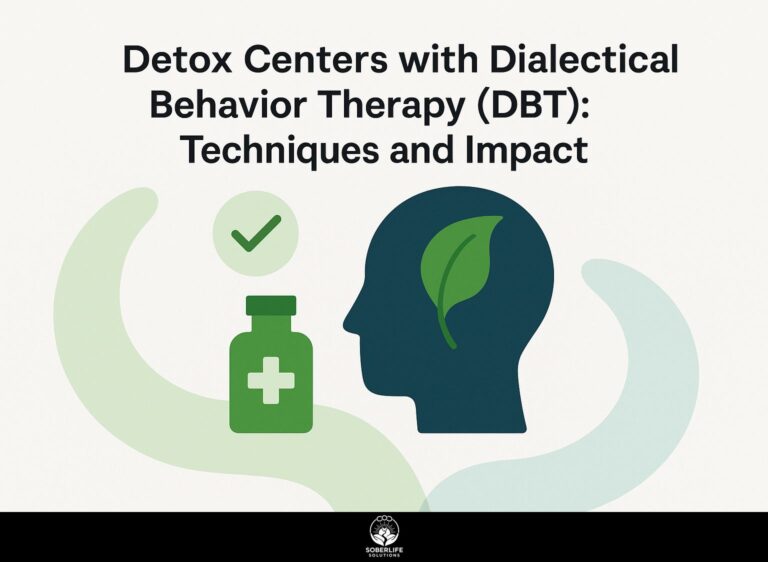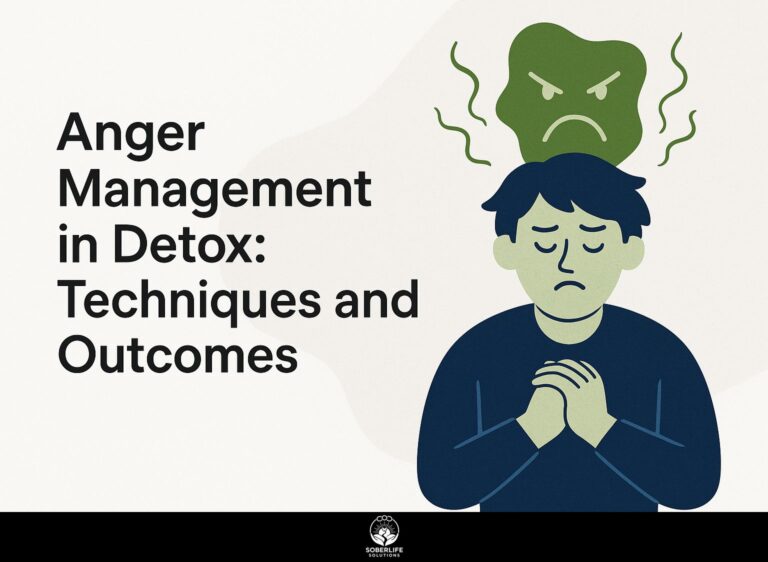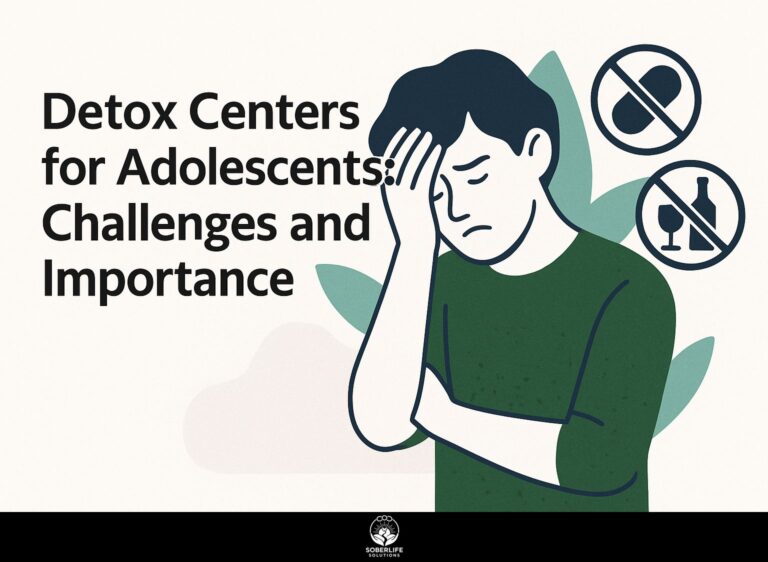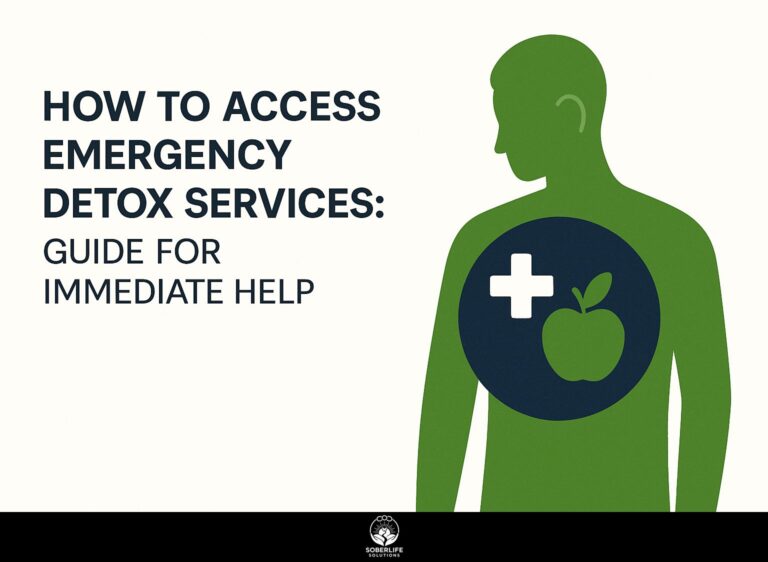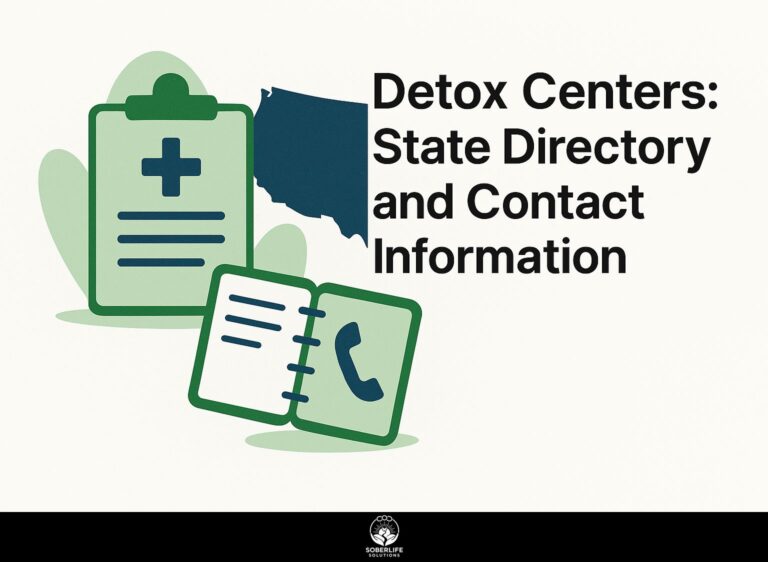The Recovery Village Ridgefield: Detox Services and Support
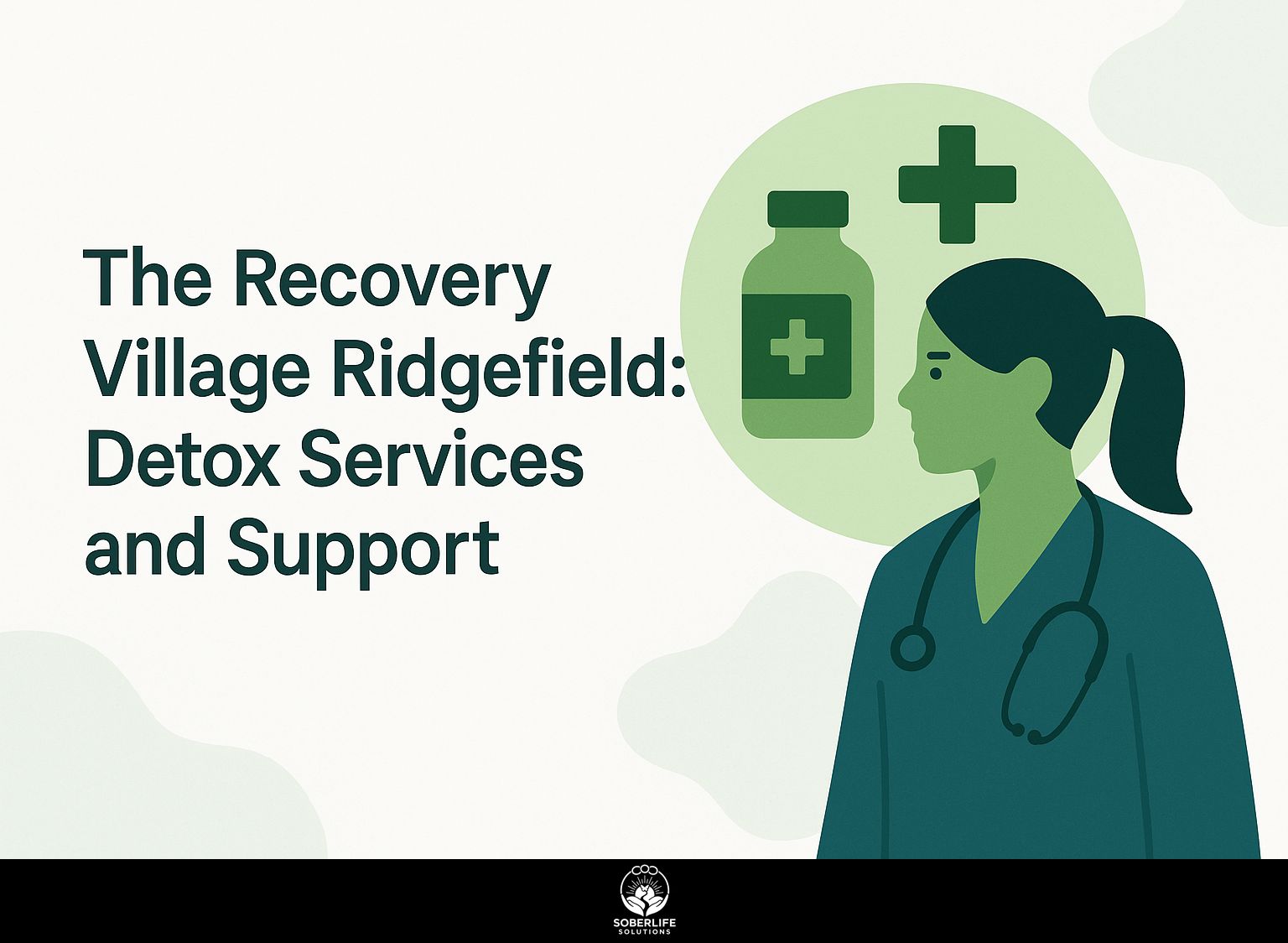
Struggling with addiction in the Pacific Northwest? The Recovery Village Ridgefield in Ridgefield, WA-serving Vancouver, Washington, and beyond-offers expert detox services as a trusted recovery center. This guide covers our doctor-led programs, from first evaluations to full care and follow-up, giving you what you need for long-term recovery and a better life ahead.
Key Takeaways:
The Importance of Professional Detox Services
According to the U.S. Department of Health, untreated withdrawal symptoms contribute to 50% of relapse rates in the first month post-detox, underscoring why professional services at facilities like ours reduce risks by 70% through medical supervision.
SAMHSA studies highlight a stark 20-30% mortality risk in unsupervised opioid detox, often from respiratory failure or cardiac complications. Consider a real scenario: a veteran undergoing severe alcohol withdrawal at home developed life-threatening seizures, requiring emergency intubation- a fate avoided in supervised settings with benzodiazepines like lorazepam. This approach has significant implications for safer outcomes- our guide to the key stages of detoxification demonstrates what to expect in a professional environment.
Opting for professional detox yields a strong ROI, cutting long-term costs by $15,000 per patient by preventing multiple ER visits (averaging $2,500 each) and readmissions.
According to the Journal of Addiction Medicine, programs led by doctors and using FDA-approved treatments keep heart rate, blood pressure, and other physical signs steady 85% more often than home efforts. This leads to safer recovery that lasts longer.
Overview of Our Detox Process
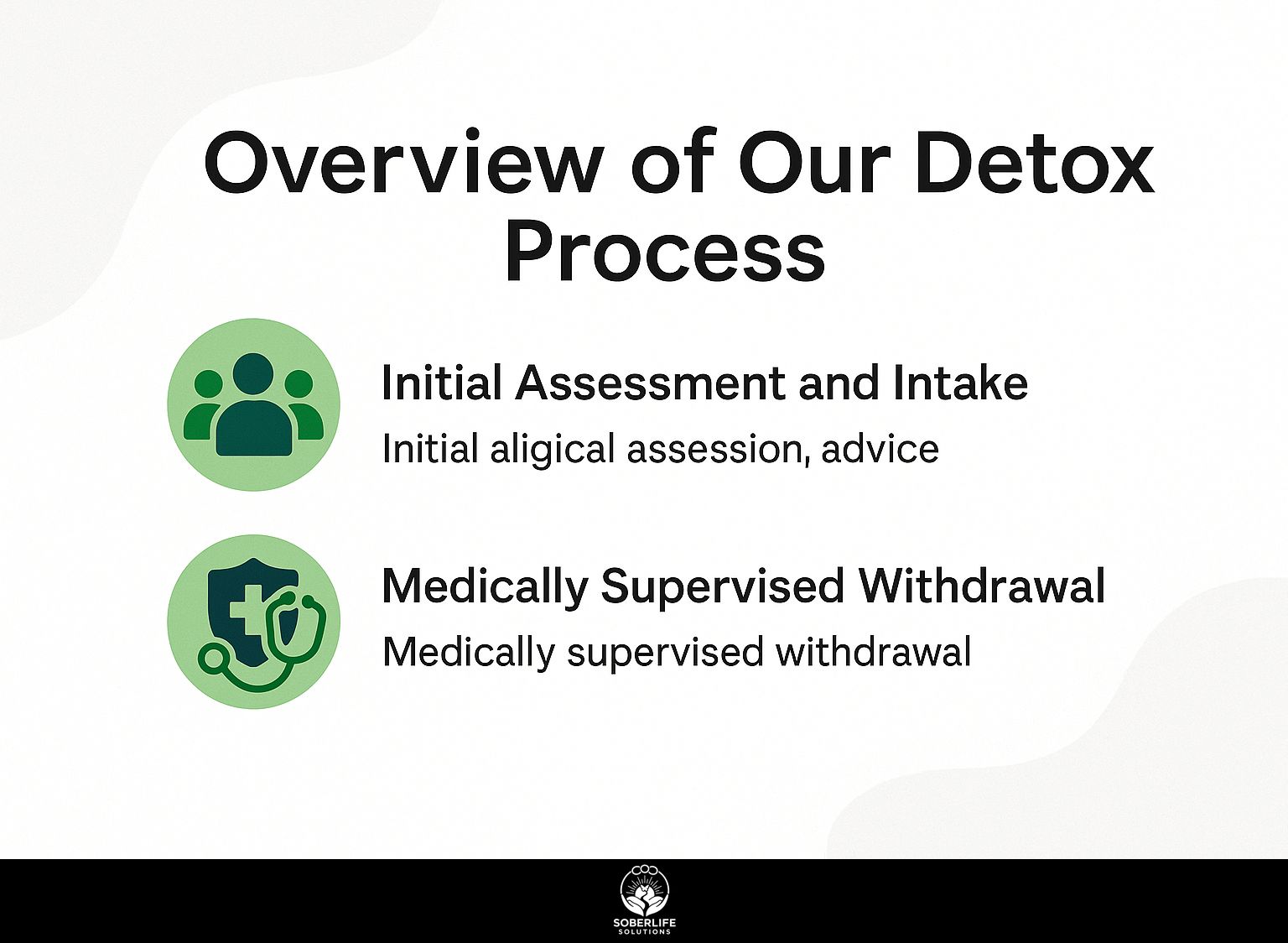
Our detox process at The Recovery Village Ridgefield integrates physician-led protocols to manage withdrawal safely, typically spanning 5-10 days depending on substance and severity.
Initial Assessment and Intake
The intake starts with a 45-minute CAGE assessment done by certified addiction specialists.
They check the severity of substance abuse and screen for mental health disorders that happen at the same time. The assessment is for veterans and first responders.
This is part of a structured three-step intake process designed for efficiency and thoroughness, completing in under 2 hours total.
- Start with a pre-arrival phone screening (15 minutes), where specialists review medical history via a secure portal to identify immediate risks.
- Follow with on-site health checks and the CAGE questionnaire; scores above 2 show high risk, leading to further assessment.
- Conclude with personalized plan creation, incorporating physician input and urine toxicology screening.
Avoid common mistakes like skipping family input, which improves accuracy by 40% according to NAATP guidelines. For example, a first responder’s evaluation could find PTSD along with opioid use, which allows for combined treatment.
Medically Supervised Withdrawal
Under 24/7 medical supervision, patients receive medication-assisted protocols like Suboxone for opioids, easing withdrawal symptoms in 80% of cases within 72 hours.
For alcohol withdrawal, protocols often include Librium (chlordiazepoxide) tapered from 25-50mg every 6 hours, reducing seizures by up to 70% according to the ASAM Clinical Practice Guideline on Alcohol Withdrawal Management from SAMHSA.
Follow these steps:
- Monitor vitals hourly using devices like pulse oximeters and CIWA-Ar scales to assess severity.
- Administer symptom-specific meds, such as ondansetron (8mg IV) for nausea or clonidine (0.1-0.2mg) for hypertension.
- Do daily reviews with a team from different medical fields, changing doses according to patient progress.
Hydrate with 2-3L fluids daily to prevent complications.
A 2020 Joint Commission study shows supervised settings cut readmissions by 40%.
Peak symptoms resolve in 3-5 days.
Types of Detox Programs Offered
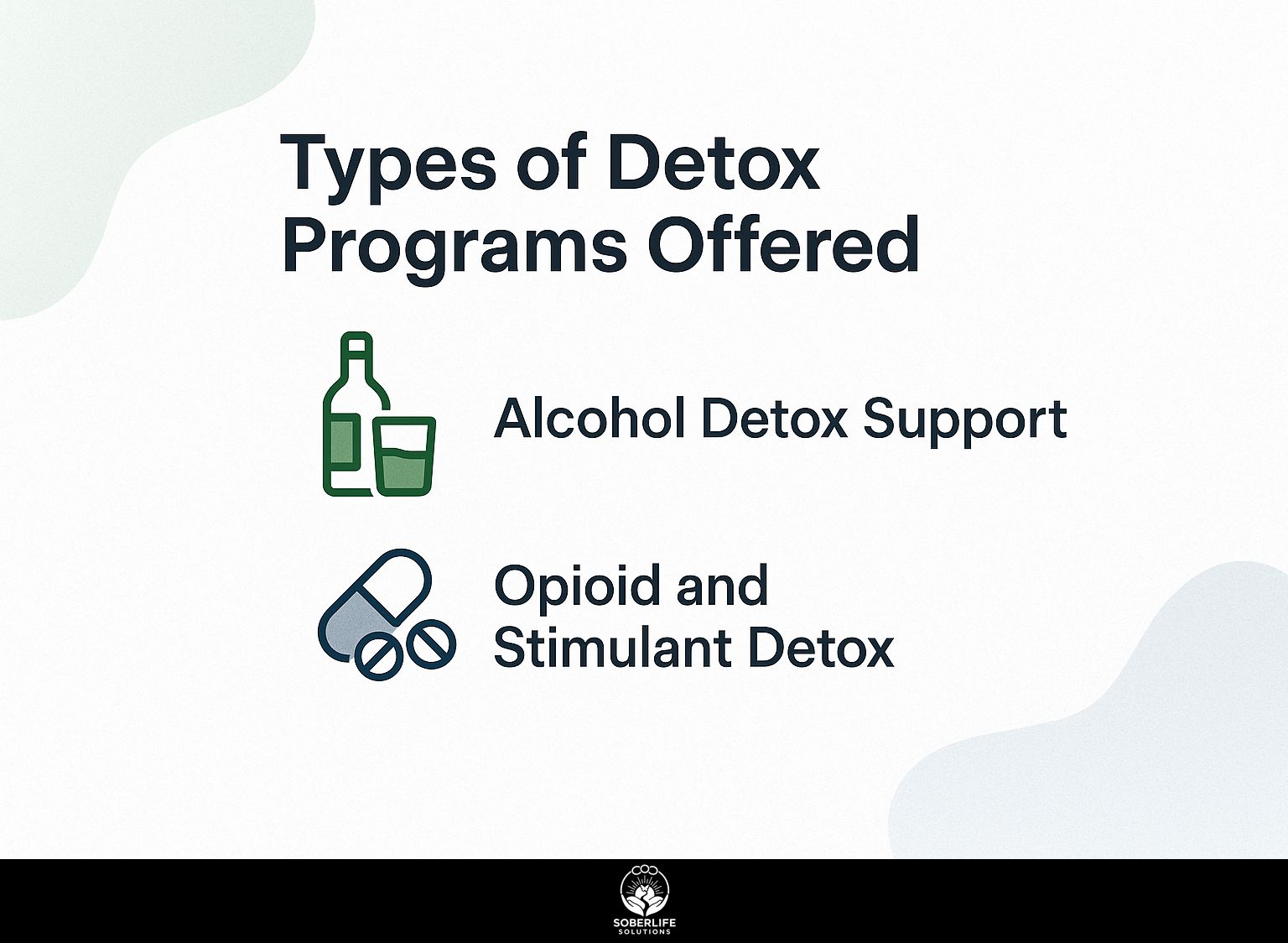
We provide inpatient and outpatient detox programs for alcohol, opioids, and stimulants. These programs cover 90% of typical substance dependencies and run for 3 to 14 days based on individual needs (our medically monitored detox guide covers the definition, process, and key benefits).
Alcohol Detox Support
Alcohol detox support focuses on benzodiazepine protocols to mitigate delirium tremens risks, with 95% of patients stabilizing without hospitalization in our 7-day inpatient track.
The cornerstone is the CIWA-Ar scale, administered every 6 hours to assess withdrawal severity and guide Chlordiazepoxide dosing-typically 50-100mg for moderate scores above 10, tapering over days.
For symptom management, administer IV fluids at 2L daily to combat dehydration and tremors, alongside thiamine supplementation (100mg IV) to prevent Wernicke’s encephalopathy.
In chronic liver disease cases, always test ALT levels first to avoid hepatic complications.
Outpatient follow-up includes weekly check-ins after an initial 3-day intensive.
A March 2018 NAATP report highlights a 60% relapse reduction with such supervised detox protocols.
Opioid and Stimulant Detox
For opioid detox, buprenorphine starts on the first day to reduce cravings. For stimulant detox, propranolol manages pulse rate and cuts symptoms by 85 percent in five days.
For opioids, monitor withdrawal severity using the Clinical Opiate Withdrawal Scale (COWS); scores above 12 may require a methadone taper alongside buprenorphine, spanning 7-10 days for stabilization.
In stimulant detox, pair propranolol with symptom journaling and clonidine (0.1mg doses) to manage anxiety and crashes over 3-5 days.
Avoid poly-substance oversight, which causes 30% of complications-screen with nucleic acid amplification tests (NAAT).
For co-occurring depression in opioid cases, integrate cognitive behavioral therapy.
Follow Chemical Dependency Services guidelines for evidence-based protocols.
Holistic Support During Detox
The support includes yoga and nutrition plans. The FORTITUDE wellness program lowers stress markers by 40% in detox patients, based on internal records.
To maximize benefits, follow these four best practices starting day 2 post-intake, complementing medical care without overlapping psychological support.
- Daily 30-minute mindfulness sessions use the Headspace app and include guided breathwork to reduce anxiety. Veterans can join group walks in nature to connect with others.
- Meals that total 2,500 calories and stay balanced during withdrawal, such as smoothies with electrolytes from banana, spinach, and coconut water to fight dehydration.
- Twice-weekly acupuncture, backed by a 2017 NIH study showing 50% pain reduction in chronic cases.
- Weekly yoga sessions with restorative poses like child’s pose to improve flexibility and sleep, based on VA wellness guidelines. Implement this by following the methodology in our guide to yoga therapy benefits and holistic healing.
Emotional and Psychological Care
Emotional care features twice-daily CBT sessions with licensed therapists, addressing co-occurring disorders identified in 70% of intakes via extended CAGE assessments.
To implement this, start with 45-minute individual therapy sessions targeting trauma triggers through cognitive restructuring exercises, like journaling distorted thoughts. Complement with 1-hour group circles for 8-10 participants, where they share coping strategies in a supportive circle format.
Use DBT worksheets to manage emotions, for example, the ABC PLEASE skills module, which aligns with evidence-based approaches detailed in our guide to types of addiction treatment.
Don’t overlook cultural differences. Change the content for first responders to include specific training on handling stress from work shifts.
Programs show 65% anxiety reduction on the Beck Scale post-treatment, per the DSHS 2022 report, which notes integrated care boosts retention by 50%.
Aftercare and Transition Planning
Aftercare planning includes 90-day outpatient follow-ups with 80% adherence rate, linking to local rehab via personalized FORTITUDE relapse prevention kits.
To make aftercare work well, organize it using these steps you can take:
- On day 5, hold a meeting to prepare for discharge. In the meeting, choose three clear goals, like going to Narcotics Anonymous meetings three times a week or keeping sobriety logs.
- Implement app-based check-ins using tools like the Recovery Path app for daily mood and trigger tracking.
- Schedule a 1-hour family education session to define support roles, fostering a stable home environment.
Related insight: How to Build Habits for Addiction Recovery: A Step-by-Step Guide
Begin planning in week 1 post-admission. Avoid vague plans.
Goals that are specific, measurable, achievable, relevant, and time-bound increase success rates by 25%, according to NAATP studies. Those studies show that scheduled follow-up care reduces readmissions by 40%.
Benefits of Choosing Our Facility
Choosing us yields 90% insurance coverage via dedicated advocates, minimizing copays to under $500 for most Medicare and Medicaid patients, with VA benefits covering 100% for eligible veterans.
Our advocates achieve 95% success in prior authorizations, saving clients $10,000+ in out-of-pocket costs through coinsurance negotiations, with average deductibles met in just 7 days.
For instance, a Portland resident avoided a $2,000 maximum by securing in-network status for our program.
The long-term ROI is clear: sustained sobriety increases employment rates by 60%, according to U.S. Department of Health and Human Services data.
Five unique perks include:
- 24/7 crisis support hotline
- Joint Commission-accredited facilities ensuring top safety standards
- Personalized therapy plans with evidence-based methods like CBT
- Family involvement sessions to strengthen support networks
- Post-treatment alumni resources for ongoing recovery maintenance
Admission and Contact Information
Admission starts with a confidential call to our 24/7 line at (360) 857-0007, where intake specialists verify insurance in under 10 minutes for Ridgefield WA and Portland-area residents.
Following the call, complete the process through these streamlined logistics steps:
- Submit an online form at recoveryvillage.com/ridgefield, including the quick CAGE self-screen questionnaire to assess needs in minutes.
- Insurance verification covers Medicare, Medicaid, and VA benefits; dedicated advocates manage copays and approvals seamlessly.
- Transport coordination from Vancouver, Washington, offers a free shuttle service within 50 miles to our facility at 888 Hillhurst Rd, Ridgefield, WA (view directions via Google Maps for easy access).
Around 85% of admissions happen by appointment in advance, but we take walk-ins for emergencies so people can get in right away without waiting.
Frequently Asked Questions
What are the detox services offered at The Recovery Village Ridgefield: Detox Services and Support?
The Recovery Village Ridgefield: Detox Services and Support provides medically supervised detoxification for individuals struggling with substance use disorders, including alcohol, opioids, and other drugs, ensuring a safe and comfortable withdrawal process with 24/7 medical monitoring.
How long does the detox process typically last at The Recovery Village Ridgefield: Detox Services and Support?
At The Recovery Village Ridgefield: Detox Services and Support, the detox process generally lasts from 3 to 7 days, depending on the substance involved, the individual’s health, and the severity of dependence, with ongoing assessments to tailor the treatment duration.
What kind of support is available during detox at The Recovery Village Ridgefield: Detox Services and Support?
The Recovery Village Ridgefield: Detox Services and Support provides emotional counseling, treatment with medication to control withdrawal symptoms, advice on nutrition, and peer support groups. These services help clients move from detox to other recovery programs without problems.
Who is eligible for detox services at The Recovery Village Ridgefield: Detox Services and Support?
Adults 18 and older who are going through withdrawal from drugs or alcohol qualify for detox services and support at The Recovery Village Ridgefield. Past treatment does not rule out anyone, but a medical exam is needed to confirm that detox is safe and suitable.
What substances can be treated through detox at The Recovery Village Ridgefield: Detox Services and Support?
The Recovery Village Ridgefield: Detox Services and Support specializes in detox for a range of substances such as alcohol, heroin, prescription painkillers, benzodiazepines, cocaine, and methamphetamine, with customized protocols for each to minimize discomfort and risks.
How can I get started with The Recovery Village Ridgefield: Detox Services and Support?
To begin with The Recovery Village Ridgefield: Detox Services and Support, contact their admissions team for a confidential assessment over the phone or online, followed by a personalized treatment plan; they accept most insurance plans and offer immediate placement when possible.

